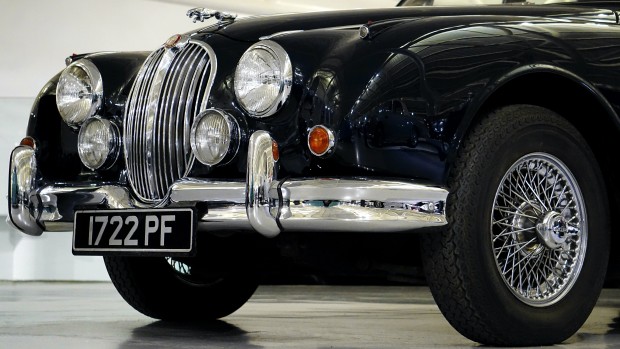The engines in these sturdy vehicles are the foundation of their power, dependability, and performance in the demanding world of pickup trucks. Since the engine that powers a pickup truck determines its performance, dependability, and efficiency are crucial factors for customers. Although many amazing engines in automotive history have helped pickup trucks achieve success, there is also a dark side to this story—a place where engines do not live up to expectations and gain a bad reputation.
A Brief Overview of the Importance of a Reliable Engine in Pickup Trucks:
Any pickup truck’s engine is its vital component and determines many aspects of its overall utility, durability, and performance. In contrast to other automobiles, pickups are frequently put through demanding conditions. They must haul large loads, traverse difficult terrain, and operate for lengthy periods. When it comes to utility vehicles, the engine becomes crucial, impacting things like hauling capability, fuel economy, and workload versatility. For truck owners who depend on their vehicles for both business and play, a trustworthy engine not only guarantees that the vehicle can endure the rigors of regular usage but also inspires confidence.

Worst Pickup Truck Engines:
5.6 L VK56DE V8:
Nissan produces the 5.6L VK56DE V8 engine, found in several Nissan and Infiniti automobiles. Key information on the VK56DE engine is as follows:
- Configuration:
A 5.6-liter V8 engine with eight cylinders arranged in a V-shape power the VK56DE.
- Applications:
A variety of Nissan and Infiniti automobiles, including pickups, performance-focused cars, and full-size SUVs, have been equipped with this engine.
- Power and Performance:
The vehicle’s model year and specifics affect the power output. The VK56DE engine is regarded for offering robust performance and power appropriate for bigger cars and applications.
- DOHC Design:
The engine has a Dual Overhead Camshaft (DOHC) architecture, which enhances performance by enabling precise control over valve timing.
- Variable Valve Timing:
Usually, VVT (variable valve timing) technology is used in the VK56DE architecture. To increase power, efficiency, and emissions, VVT optimizes valve timing.
- Aluminum Construction:
The engine block and cylinder heads of the VK56DE engine are frequently made of aluminum, just like those of many other contemporary engines. This aids in weight loss overall.
- Multi-Point Fuel Injection:
Multi-Point Fuel Injection (MPFI) is a feature of the engine that allows for effective fuel delivery to every cylinder.
- Applications:
The Nissan Titan, Armada, and Pathfinder, as well as the Infiniti QX56/QX80, are among the Nissan and Infiniti cars that have utilized the VK56DE engine.
- Model Years:
The VK56DE engine has been utilized in a variety of model years, therefore for precise information, it is important to look up the application and year in question.

5.4L – 3V Triton V8:
A part of Ford’s Triton engine family, the 5.4L 3V Triton V8 engine has been used in several Ford trucks and SUVs. Key information on the 5.4L 3V Triton V8 is as follows:
- Configuration:
A 5.4-liter engine with eight cylinders arranged in a V-shape is called the 5.4L 3V Triton V8.
- Valvetrain:
The three valves per cylinder design—two intake and one exhaust valve—are denoted by the “3V” designation.
- Applications:
Ford has used the 5.4L 3V Triton V8 engine in several of its vehicles, such as the F-150, Expedition, and several E-Series van models.
- Power and Performance:
The model and year of the vehicle determine the power output. The 5.4L 3V Triton V8 was often utilized to deliver enough power and torque for tasks like hauling and towing.
- SOHC Design:
The timing of the intake and exhaust valves is managed by the engine’s Single Overhead Camshaft (SOHC) architecture.
- Fuel Injection:
For better economy and performance, electronic fuel injection is usually used to control fuel supply.
- Aluminum Block and Heads:
To lower the engine’s total weight, aluminum may be used in the building of the cylinder heads and engine blocks.
- Applications:
Often seen in Ford trucks and SUVs, the 5.4L 3V Triton V8 was designed for applications requiring a blend of capability and power.
- Model Years:
The 5.4L 3V Triton V8 engine was available in varying quantities based on the Ford model and used in various model years.

Lessons Learned and Way Forward:
In the automobile business, manufacturers and customers may learn various lessons from the development of engines such as the 5.4L 3V Triton V8.
Lessons Learned:
- Adaptability is Key: An engine model’s capacity to adjust to evolving industry norms, such as those about emissions and fuel economy, determines how successful it will be. Despite its strength, the 5.4L 3V Triton V8 had trouble adhering to changing environmental regulations.
- Consumer Expectations Matter: Customer preferences are a major factor in how long engine types last, particularly when it comes to fuel economy and environmental effects. Manufacturers need to match what customers value most with their products.
- Technological Innovation is Essential: It is becoming increasingly important to adopt modern technology as the automobile sector develops. To increase performance and economy, more modern engines frequently use advances like sophisticated materials, variable valve timing, and direct fuel injection.
Moving Forward:
- Investment in R&D: Manufacturers must persist in allocating resources towards research and development to provide engines that surpass the expectations of consumers. This covers developments in electricity supply, environmental sustainability, and fuel economy.
- Environmental Considerations: The car sector ought to persist in creating engines that minimize pollutants and fuel consumption, given the growing significance placed on sustainability. Greener options are becoming more common, as seen by the rise of electric and hybrid technology.
- Communication with Consumers: Open channels of communication between manufacturers and customers are important for resolving issues and sharing updates on engine technology improvements. This openness promotes confidence and aids in controlling expectations.
- Balancing Power and Efficiency: Finding the ideal ratio between power and fuel economy is still crucial. Engine designers must create engines with sufficient performance and characteristics that reduce their negative effects on the environment.
- Regulatory Compliance: Keeping up with and abiding by international emissions and efficiency laws is critical. To remain competitive, manufacturers should take the initiative to modify their engines to meet these requirements.
Frequently Asked Questions (FAQs):
Which truck has the worst reliability?
The Ford F-150 and Dodge Ram 1500 are prospective candidates for trucks with potentially inferior dependability since certain model years of both have historically experienced reliability issues.
Which truck has the most powerful engine?
Among trucks, the Ram 1500 TRX is renowned for having one of the strongest engines. It has a 6.2-liter HEMI V8 supercharged engine that can generate over 700 horsepower.
Which truck is the simplest to fix?
Many people believe that the Toyota Tacoma is one of the easiest vehicles to repair. It is simple mechanical systems, readily available components, and design all make maintenance and repairs easier.
Which truck requires the least maintenance?
Because Toyota is famed for its dependability, the Tacoma is reputed to require less maintenance than some other trucks. Individual maintenance requirements, however, may differ depending on things like driving circumstances and automobile maintenance habits.
Conclusion:
In summary, the development of engines like the 5.4L 3V Triton V8 is a microcosm of the larger story in the automotive sector. Even though the 5.4L engine was essential for power and dependability, its tale captures the difficulties and adjustments that come with the always-changing automobile industry.
As we say goodbye to past engines, like the 5.4L 3V Triton V8, innovation, environmental awareness, and customer-focused design are the hallmarks of the automobile industry’s future. Learning from the advantages and disadvantages of these kinds of engines emphasizes the value of flexibility, the advancement of technology, and the necessity of keeping up with shifting customer demands.

